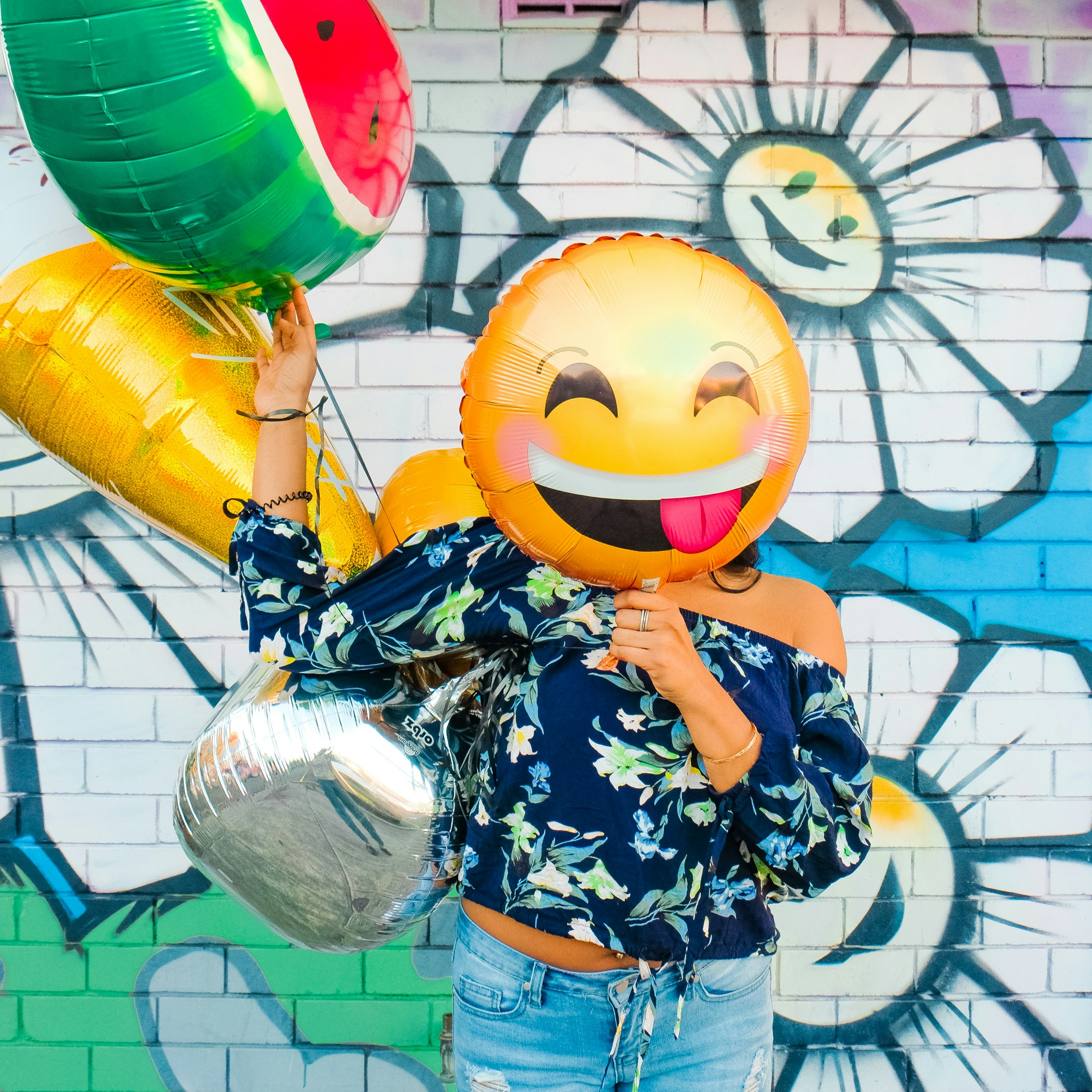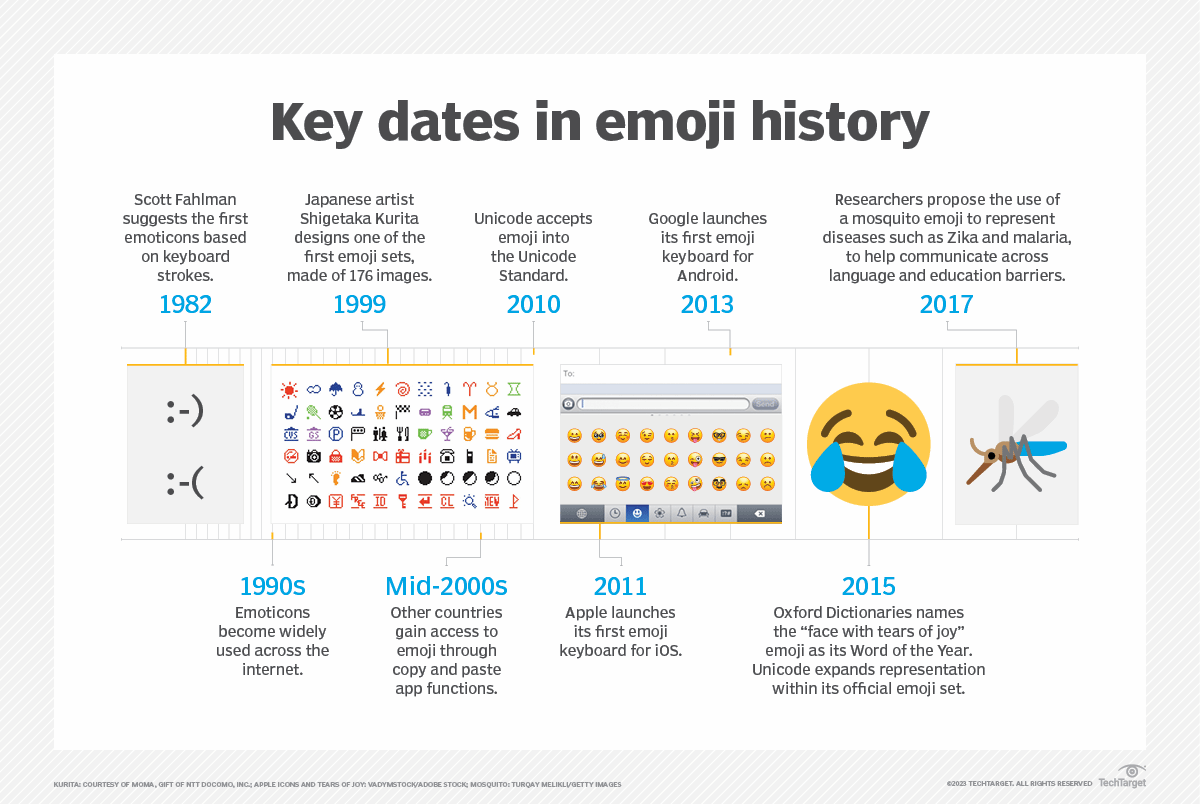Welcome to World Emoji Day, 17th July 2024! 🌍🎈 From expressing emotions to adding a human touch to your brand, emojis can transform your social media content (when used correctly). Let’s take a look at how you can use these tiny icons effectively, along with some do’s and don’ts…
What Are Emojis? 🤔
Emojis are those delightful little icons you see everywhere – from text messages to social media posts.
They originated in Japan in the late 1990s and have since exploded into a universal language. From happy faces 😀 and hearts ❤️ to tacos 🌮 and unicorns 🦄, there’s an emoji for almost everything!
The Origin and History of Emojis 📜
Emojis have a fascinating origin story that dates back to the late 1990s in Japan.
The term “emoji” is derived from the Japanese words “e” (絵) meaning picture and “moji” (文字) meaning character. Shigetaka Kurita, a Japanese artist, created the first set of 176 emojis in 1999 as part of a team working on NTT DoCoMo’s i-mode mobile internet platform.
These early emojis were simple 12×12 pixel designs meant to convey information in a compact, visual format.
Their popularity quickly grew, and by the early 2010s, they had become a global phenomenon, thanks in part to their inclusion in major smartphone operating systems by Apple and Google.
Today, there are over 3,000 emojis recognised by the Unicode Consortium, the organisation responsible for standardising these icons across different platforms.
Fun Facts 🎉
- World Emoji Day: Celebrated on July 17th, this date was chosen because it’s the date shown on the calendar emoji 📅 on Apple devices.
- Most Popular Emoji: The “Face with Tears of Joy” 😂 was declared the Oxford Dictionary Word of the Year in 2015.
- Emoji Movie: In 2017, emojis even made their way to Hollywood with “The Emoji Movie,” a film that explores the secret world of emojis inside a smartphone.
- Diversity: The Unicode Consortium continues to expand the diversity of emojis, including skin tones, genders, and cultural symbols to ensure they represent a broad spectrum of users.
- Emoji Art: Emojis have inspired a new form of art, with artists creating entire portraits and scenes using just emojis.
Why You Should Use Emojis in Your Marketing 🎤
Emojis can do wonders for your social media tone of voice. Here’s how they can transform your posts:
- Express Emotion: Add a smile 😊 to show friendliness, or a celebratory emoji 🎉 to share excitement. They convey feelings that words sometimes can’t.
- Add Personality: Emojis infuse personality into your brand, making it feel more human and relatable. Think of them as the spice to your social media dish.
- Clarify Intent: Ever had a message misunderstood? Emojis help clarify the tone. A wink 😉 can indicate a joke, while a heart ❤️ shows appreciation.
- Boost Engagement: Posts with emojis (used correctly) can often get more likes and shares. They make your content eye-catching and fun.
If you’re not sure of the best emoji to use, check out Emojipedia, your go-to guide for every emoji under the sun. 🌞
In my ‘Mastering Social Media Customer Service’ training course for the Call Centre Management Association we discuss various examples of emoji use, with the conclusion that the best way to use them in response to a customer’s message is to let the customer take the lead and to mirror their use. It is important not to ‘shoehorn’ them into a message in an unnatural way.
It can be useful to include how to use emojis within your tone of voice guidelines. For example, Mailchimp’s Content Style Guide suggests that “Emojis are a fun way to add humour and visual interest to your writing, but use them infrequently and deliberately.”
And Why You Shouldn’t: Emoji Don’ts 🚫
While emojis are fun, there are some guidelines to keep your usage on point. Based on data from Brands2Life, featured in Mobile Marketing Magazine:
- Don’t Overdo It: Too many emojis can look messy. Stick to a few that complement your message. Younger audiences are especially receptive to this, with 31% of 18-34-year-olds said they would be turned off a brand for overusing them.
- Know Your Audience: Ensure they resonate with your audience and are culturally appropriate. What’s cute in one culture might be confusing or offensive in another. 41% of consumers are of the belief that inappropriate or insensitive emojis can damage a company’s reputation.
- Stay On-Brand: Use emojis that align with your brand’s voice. A playful brand might use more of them, while a professional service might use them sparingly.
- Avoid Misinterpretation: Some have multiple meanings. Make sure your chosen emoji conveys the right message.
- Be Inclusive: Did you know that a quarter of consumers would consider stopping purchases from a brand that uses emojis in a non-inclusive way on social media? And 37% say that they would unfollow a brand on social media for that reason.
Accessibility Considerations 🌐
When using emojis, think about accessibility to ensure everyone can enjoy your content.
Here are some tips from Accessible Social’s Checklist.
- Use Them Sparingly: Too many can overwhelm screen readers, making it hard for users to understand your message.
- Place Them at the End of Sentences: This helps screen readers process the text first, followed by the emoji description.
- Avoid Complex Emojis: Stick to simpler icons that screen readers can easily recognise.
- Provide Context: Ensure the context around the emoji is clear so that the message is understandable even without the emoji.
Conclusion 🌟
Emojis are more than just cute additions to our messages; they’re powerful tools that can enhance your social media presence and help you engage with your audience. We can express emotion, add personality, clarify intent, and boost engagement. They support your brand’s tone of voice beautifully. Just remember to use them thoughtfully, keeping in mind your audience and accessibility needs.


